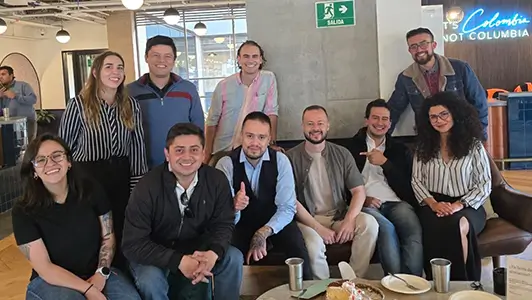Organizations across industries are facing unprecedented pressure to deliver seamless, personalized, and scalable digital experiences. Customers expect intuitive access to information and services, while internal teams demand streamlined workflows and integrated platforms. Fragmented portals, legacy systems, and disconnected touchpoints create friction that limits growth and erodes trust. True business transformation requires more than new technology — it demands a unified approach to how digital experiences are envisioned, built, and scaled.
The complexity behind the experience
Many companies operate with a landscape of portals built over time to serve distinct business units, customer types, or geographies. While these platforms often meet short-term needs, they rarely align with broader enterprise strategy. The result: duplicated functionality, inconsistent branding, disconnected user journeys, and costly maintenance. These challenges are further compounded by evolving privacy regulations, increased customer expectations, and the rapid pace of innovation.
A harmonized portal strategy is not about creating a one-size-fits-all platform. It’s about strategically consolidating where it makes sense, integrating where it adds value, and aligning digital experiences with enterprise goals. The key is to view portal harmonization not as an IT project, but as a business transformation initiative.
Reimagining the digital ecosystem
Portal harmonization is an opportunity to reimagine how an enterprise engages with its customers, partners, and employees. It starts by asking:
- What experience do we want to deliver across the entire journey?
- How do our internal capabilities support that experience?
- Where do we need to consolidate, and where should we enable flexibility?
Successful efforts prioritize alignment across business, product, and technology leaders. A clear North Star vision, supported by an actionable roadmap, helps coordinate teams across silos. The process involves rationalizing systems, consolidating content, integrating data, and modernizing infrastructure, all while keeping the human experience at the center.
Unlocking strategic value
When done right, portal harmonization drives measurable business outcomes:
- Improved customer experience: Consistent, intuitive experiences build trust and loyalty.
- Operational efficiency: Reducing duplication and complexity enables faster innovation.
- Data intelligence: A unified architecture allows for better insights and personalization.
- Governance and compliance: A centralized framework makes it easier to manage risk.
- Sustainable growth: Scalable platforms support future expansion and agility.
These outcomes reflect the broader goals of strategic business transformation: enabling organizations to adapt, grow, and thrive in a rapidly changing environment.
Human-centered transformation
Portal harmonization is ultimately about people. It involves shifting behaviors, roles, and mindsets across the organization. Clear communication, change management, and ongoing stakeholder engagement are critical. Equally important is building inclusive platforms that reflect ethical considerations, support accessibility, and deliver value to all users.
Conclusion
As digital becomes the primary interface between businesses and their customers, the case for portal harmonization becomes increasingly urgent. But it is not just about technology consolidation — it is a strategic lever for enterprise transformation. Organizations that embrace this opportunity will not only simplify their digital landscape but also unlock new ways to deliver human-centered, sustainable value at scale.
Portal harmonization is not the end goal. It is the foundation for what comes next.



















